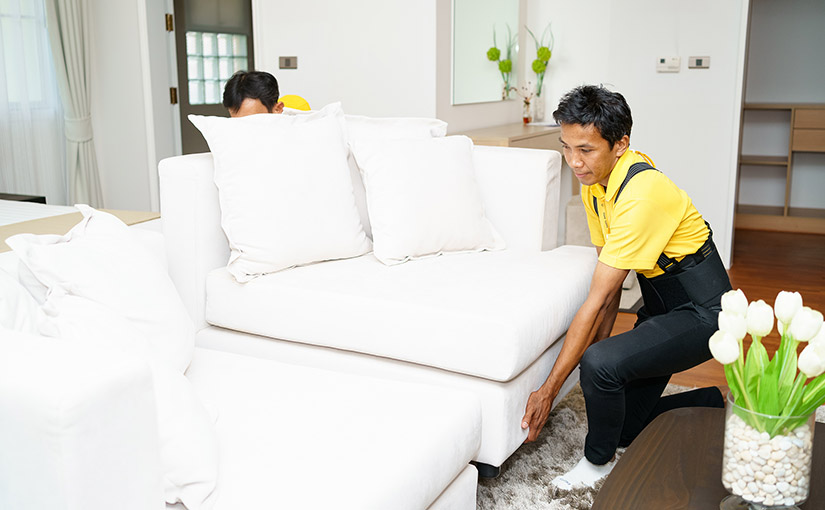Protect Your Floors When Moving: Avoid Costly Damage with These Critical Tips
- Asian Tigers Group
-
Home » News » Industry News » Protect Your Floors When Moving: Avoid Costly Damage with These Critical Tips
Rob Chipman: A Fond Farewell and the Start of New Adventures

Moving can be so exciting, yet so stressful, since it entails a lot of careful planning and preparation. One of the most overlooked aspects involves possible damage to floors during moves. Whatever your floor type is-hardwood, tile, or carpet-it may end up getting scratched, dented, or stained from heavy foot and furniture traffic moving in and out. In this article, we show how to protect the floor when moving by offering some essential tips that may help people avoid expensive damages and keep their floors in good condition.
1. Strategic Planning of the Move
The first thing you should do to learn how to protect floors when moving is to strategize about your move. Think about the layout of your home and trace the path that your movers will take in order to carry items inside and outside your home. Pinpoint certain areas that are more highly prone to damage, including narrow hallways, tight corners, and entryways. By having a plan, you can execute plans to protect these areas.
If possible, try to plan your moving date on a day with dry weather. Muddy or wet conditions will include slippery floors and more dirt and moisture on your flooring, which may be more prone to damage.
2. Apply Protective Materials
One of the effective ways to safeguard floors during a move is by using protective materials. Some of these are among the best:
Floor Runners
These are long mats or sheets laid on your floors to protect them from heavy foot traffic. These floor runners are very helpful and especially needed for hallways and entryways. Choose those with a non-slip backing to keep the runners in place during your move.
Furniture Sliders
Furniture sliders are small pads placed under the legs or corners of furniture to help in moving these heavy objects without scratching or denting your floors. Sliders come in different sizes and varieties depending on the floors-felt for hardwood floors, plastic for carpets.
Cardboard Sheets
Cardboard sheets are cheaper and, therefore, good options to cover the floors. Place them at locations where furniture or appliances will be moved across the floor to avoid scratches and scuffs. Cardboard is good for short-term protection and is easily disposable after the move.
Plywood Sheets
You can use plywood sheets for added protection, especially when moving heavy items like a piano or refrigerator. The plywood makes a solid barrier to resist heavy weight, hence giving your floors minimum opportunities for dents or cracks.
3. Protect Doorways and Entry Points
Doorways and entry points are the most likely places where the floor could get damaged. To protect these places:
Doorway pads or blankets can be laid over door thresholds to protect them from scratching and dents during moves in and out. They protect the door frame against damage, too.
- Apply Painter’s Tape: The tape will hold protective materials such as cardboard or plastic sheets in place. One would find that taping the edges of runners or cardboard securely would be a good idea so they would not shift or curl up and provide tripping hazards.
- Floor Protection Films Installation: One can use floor protection films for tile or hardwood floors. These adhesive films go directly on the floor, adhering firmly to protect them from scratching and scuffing, including spills.
4. Disassemble Furniture When Possible
Large heavy furniture can be hard to get through tight places without any damage to the floor. Take the furniture apart where possible, removing the legs, shelves, and other items that are easily taken off, helping to lighten it and also make the pieces easier to carry without scratching or denting the floor.
Keep all screws, bolts, and small parts labeled and stored together for easy reassembly at your new home.
5. Lift, Don’t Drag
One of the most popular ways to scratch or scuff floors while moving is by dragging heavy furniture across them. Rather than dragging, items should be lifted and carried whenever possible. This does more than just save your floors; it can also save your movers from overexertion.
When it’s not possible to lift, have a set of furniture sliders on hand for gliding heavy objects along the floor without causing damage. Remember to select the correct slider for your type of flooring-felt sliders for hardwood, plastic sliders for carpet.
6. Protect Carpeted Floors
Carpeted floors require different protection strategies than hardwood or tile. Here’s how you might protect carpets during a move:
- Apply Plastic Carpet Protectors: Plastic carpet protectors are adhesive sheets laid over the carpet for protection against dirt, moisture, and stains. These types of protectors play a vital role in areas with heavy traffic, such as stairs and hallways.
- Lay Down Carpet Masking Tape: Carpet masking tape might be used to hold down protection materials like plastic sheets or runners. This keeps the protection from shifting and holds it in place during a move.
- Pre- and Post-Vacuuming: Vacuum carpets before moving day to pick up any loose dirt that might get ground into the fibers due to the move. Later, when all is moved, vacuum again to pick up interim accumulated dirt or dust.
7. Preparing Weather Conditions
Weather conditions can also greatly affect your floors, especially when you’re moving. Rain, snow, or even mud make the floors slippery and create water damage to your hardwood floors. Here’s how to prepare for these different weather conditions:
- Use Mats and Towels: Place mats or towels at entry points to wipe off shoes before stepping onto the floors. This will keep water, mud, and dirt from being tracked inside.
- Keep a Wet/Dry Vacuum Handy: A wet/dry vacuum will pick up water and mud that hits the floors in a jiffy. This is particularly true for hardwood floors, which may buckle with too much exposure to water.
- Provide Shoe Covers: Give each mover some shoe covers to wear into your home. They keep dirt and water off the floor and minimize the possibility of damage.
8. Communicate with Your Movers
Finally, one of the biggest steps in learning how to protect floors when moving is simply to communicate with your movers. Inform them about floor protection and your concerns, and inquire about their strategies for preventing any damage. Most professional moving companies have experience in protecting floors and will be happy to accommodate your requests.
Discuss with everyone involved in this self-move the importance of protecting the floors and what you are doing to help protect the floors from damage. Communication works, especially in an effort to get everyone on the same page, giving their all in protecting your floors.
Conclusion
Protecting your floors during moves requires a cautious plan of action and proper supplies. Save yourself from costly damages to your floors by following these crucial tips on protecting the floors while moving. Whether you are hiring professional movers or doing it yourself, it will pay off later by creating a smooth-sailing and stress-free moving experience in taking the time to safeguard your floors.
If you’d like to discover the latest information about the moving and relocation world, please also check other industry news from Asian Tigers Group.
Your trusted moving support is only a few clicks away from your hand. Contact the Asian Tigers office near your origin or destination for your next move. You can also check our Frequently Asked Questions resource, AI-powered by Tiger Move Bot.









